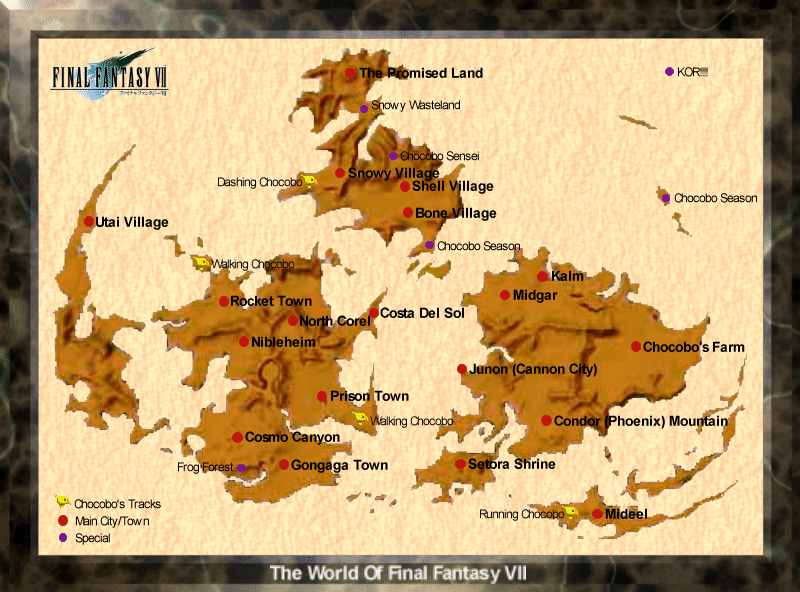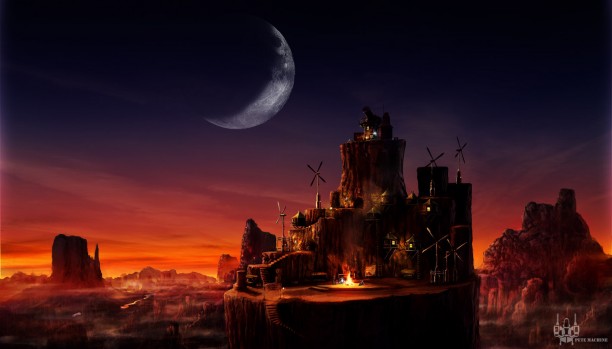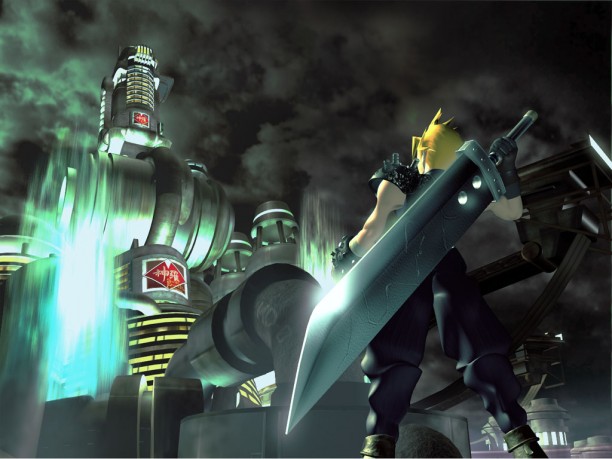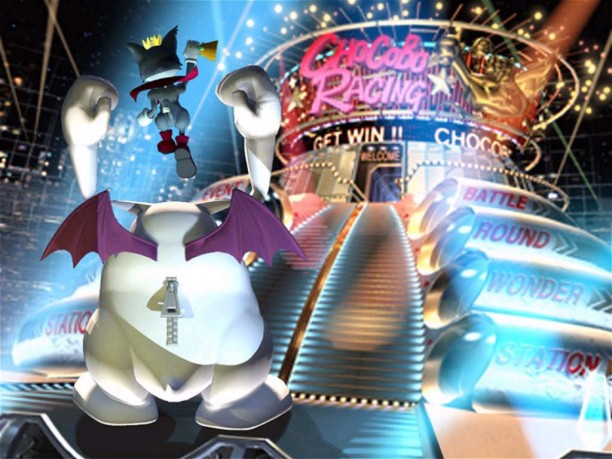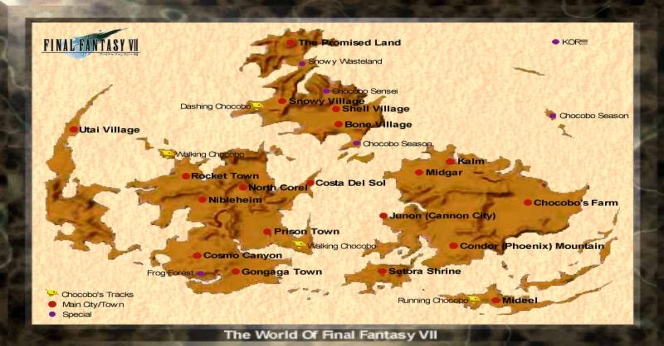
Map Quest
Map Quest: Final Fantasy VII
Outside of Final Fantasy VI, I’d be hard pressed to think of a better example of a solid world map than Final Fantasy VII. Nearly everything was identifiable, and there was a secret in just about every nook and cranny of the world.
While pretty much every Final Fantasy game up until that point had a rich and interesting world, it wasn’t until VII that I truly became lost in it. I wanted to explore every facet of that game, no matter how insignificant: whether it was on, above, or below ground. That’s the power of a solid RPG world map.
World maps in JRPGs have pretty much always existed, but it wasn’t until the PlayStation era that they started to become more fleshed out: mostly due to the amount of graphical detail that the technology brought along with it.
Before that, the FF series was relegated to the Super Nintendo and its predecessors, most notably FFVI, which utilized the Super Nintendo’s “Mode 7” graphical prowess.
While it was revolutionary at the time, Mode 7 made everything look flat, and less believable. In short, going from FFVI to VII was like going from a picture book to a pop-up novel.
Who doesn’t remember Fort Condor? The pagodas of Utai Village? The irreplaceable Gold Saucer? The dark and dreary northern lands?
Nearly every area of the game looked unique, and had its own feel to it. When you were raiding Shinra Tower, that part of the world felt unmistakeably unsafe. Rumors of the Midgar Zolom made you nervous and uneasy.
Junon, once a place of respite and beauty, was all but lost after the attack of Sapphire Weapon. Fortunately, you were able to save Fort Condor, so not all was lost on the Eastern continent.
But not everything was dangerous: Costa Del Sol was so relaxing that even Hojo could take a load off. Cosmo Canyon was a source of meditation and self reflection. The Gold Saucer, while loud and bright, was a great way to spend a weekend taking a break from combat and adventuring: after all, the Promised Land could wait.
This dichotomy of danger and refuge is what made FFVII so great. Square did such an amazing job making every location unique: giving you an actual reason to be there, not simply just to advance gameplay. I distinctly remember wanting to get out of Midgar as soon as possible: that the characters I had in my party didn’t “deserve” to be in the slums, like they were meant for something more.
Another amazing aspect of FFVII‘s map is the fact that no geographical feature was left unturned. There were snow, desert, plains, and underwater shennanigans to be had. Although Final Fantasy I, III, and V all featured submarines, VII made underwater exploration an absolute dream.
Finally, you were able to truly discover what lies beneath. Submarines also weren’t just added in for the sake of being there: there were entire underwater combat sequences that helped cement the underwater coffin as a legitimate means of transportation.
Even when you finished the main story, your work still wasn’t done. It was time to earn your Gold Chocobo and seek out the vast riches of the world, with unfettered exploration capabilities. Long before internet guides were a mainstead, the only “secrets” you heard about were hearsay between friends. Until you found it, Nights of the Round and Mime were just legends.
“Yea if you go below Cosmo Canyon there’s a secret cave with hidden materia in it.” Was it true? I couldn’t wait to go home and find out. I had it all mapped out in my head: “Cosmo Canyon, south-west on the map, if I go south of Nibelheim I should hit it just fine.”
Feelings like that are rarely replicated in games. Final Fantasy VII‘s world map was more than just a map — it was a method for unlocking the secrets of a living, breathing ancient world — it felt real.
